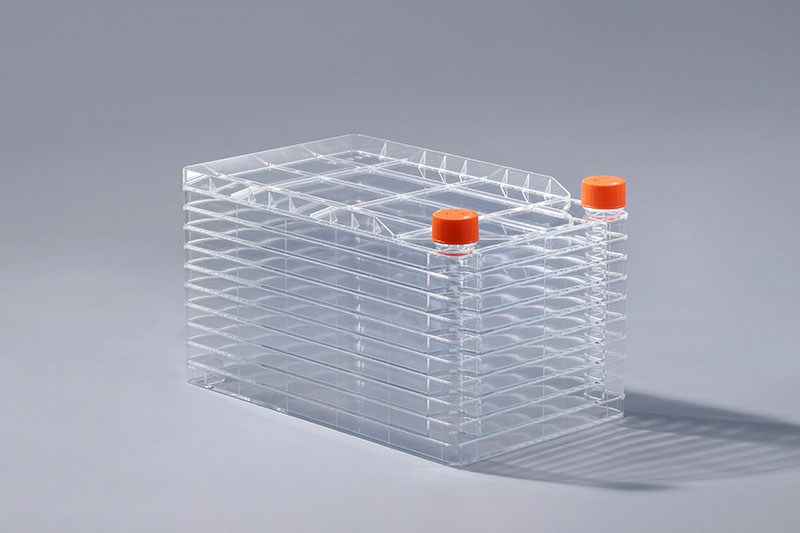Fábricas de célulasdesempenham um papel importante na cultura de células em larga escala, como preparação de vacinas e vetores lentivirais. Ao cultivar células, vários tipos de poluição são muito problemáticos. Entre as fontes de poluição, a poluição microbiana é um tipo relativamente comum de poluição.
A contaminação microbiana refere-se a várias fontes de contaminação, como bactérias, fungos, micoplasmas e vermes negros que crescem quando as células crescem em fábricas de células .
1. Bactérias: A contaminação bacteriana geralmente inclui Escherichia coli, Staphylococcus, etc. Este tipo de contaminação é fácil de encontrar. É areia preta e fina sob um microscópio invertido comum. A solução de cultura geralmente fica amarela em pouco tempo. O líquido não é misturado, um pouco de agitação fará com que muita turbidez flutue.
2. Mofo: A maior parte da contaminação do molde é Candida albicans, Aspergillus, levedura e assim por diante. Após a contaminação do mofo, o meio de cultura permaneceu límpido e turvo em um curto período de tempo. Sob um microscópio invertido, hifas filamentosas e dendríticas entrelaçadas entre as células podiam ser vistas flutuando no meio de cultura. Mycoplasma: O tamanho do Mycoplasma está entre bactérias e vírus, e é um microrganismo vivo independente. Sensível ao calor, não aos antibióticos gerais. A forma do micoplasma é mutável e é principalmente adsorvida na superfície celular e entre as células. Observados ao microscópio eletrônico, há grânulos densos de alta densidade no centro, e a seção transversal é semelhante às microvilosidades da célula.
4. Vermes pretos: pequenas manchas pretas aparecem nas células após serem contaminadas por vermes de cola preta, e movimentos irregulares podem ser vistos sob um microscópio de alta potência. A turbidez do meio de cultura não era óbvia, e teve pouco efeito sobre o estado de crescimento das células. Os itens acima são contaminações microbianas comuns ao cultivar células em fábricas de células. Eles têm efeitos diferentes no crescimento celular. O controle dessas contaminações é uma medida fundamental para garantir um bom crescimento celular.
4. Black worms: Small black spots appear in the cells after being contaminated by black glue worms, and irregular movements can be seen under a high-power microscope. The turbidity of the culture medium was not obvious, and it had little effect on the growth state of the cells.
The above are common microbial contaminations when culturing cells in cell factories. They have different effects on cell growth. Controlling these contaminations is a key measure to ensure good cell growth.
The FAI climbed 5.9 percent year-on-year in the first 11 months of 2018, quickening from the 5.7-percent growth in Jan-Oct, the National Bureau of Statistics (NBS) said Friday in an online statement.
The key indicator of investment, dubbed a major growth driver, hit the bottom in August and has since started to rebound steadily.
In the face of emerging economic challenges home and abroad, China has stepped up efforts to stabilize investment, in particular rolling out measures to motivate private investors and channel funds into infrastructure.
Friday's data showed private investment, accounting for more than 60 percent of the total FAI, expanded by a brisk 8.7 percent.
NBS spokesperson Mao Shengyong said funds into weak economic links registered rapid increases as investment in environmental protection and agriculture jumped 42 percent and 12.5 percent respectively, much faster than the average.
In breakdown, investment in high-tech and equipment manufacturing remained vigorous with 16.1-percent and 11.6-percent increases respectively in the first 11 months. Infrastructure investment gained 3.7 percent, staying flat. Investment in property development rose 9.7 percent, also unchanged.
 English
English



















































